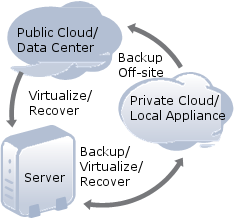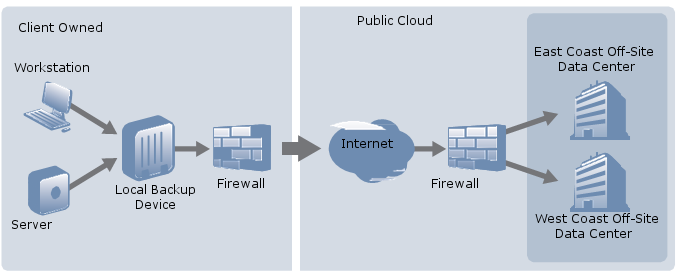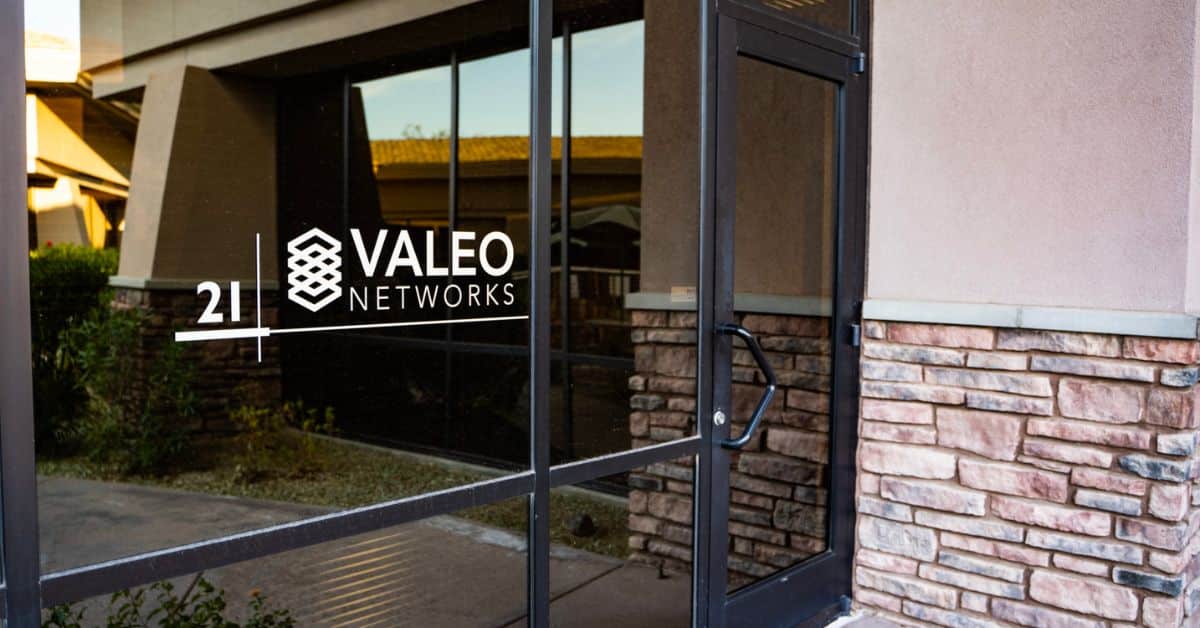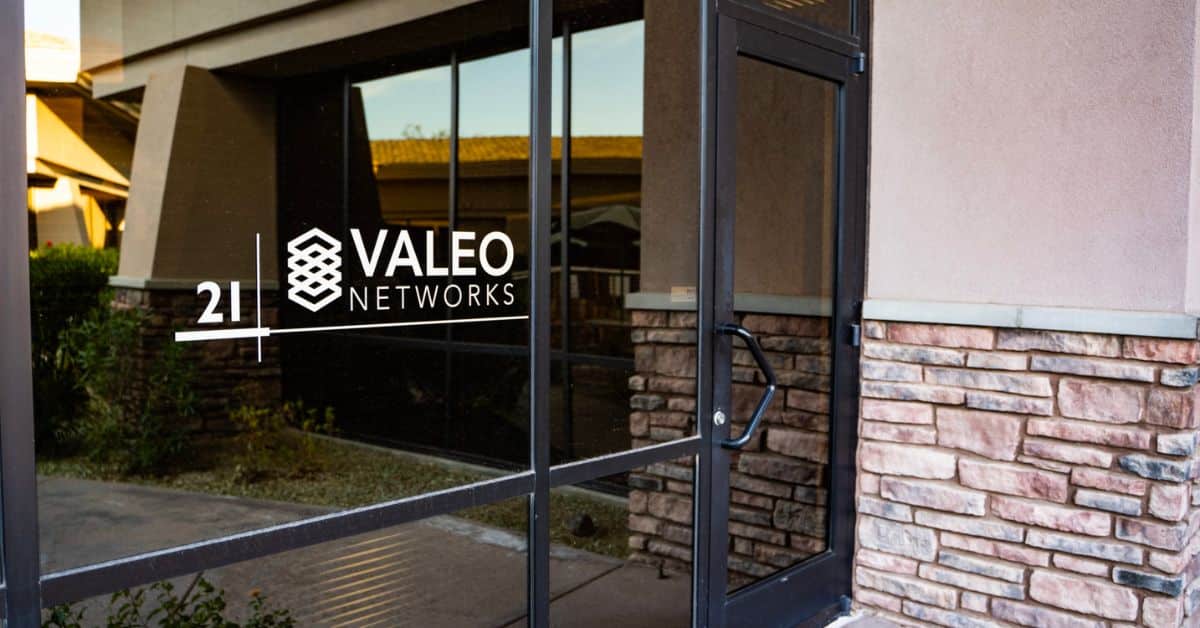Why Your Business Needs Remote Data Backups
Did you know that 60% of companies that lose their data will go out of business within 6 months of the disaster? Is your business capable of...
Understanding the Cloud Options
A hybrid cloud solution combines private (internal/on-premise) and public (external) cloud deployment models. With a typical private cloud solution, one would build, develop and manage their own cloud infrastructure. The most common deployments of private cloud solutions are in enterprise-level environments. Businesses that have the capital to fund a private cloud operation will usually purchase the necessary equipment, hire their own dedicated IT support teams, and build or lease their own data centers. This allows the company to have complete control over their cloud environment. The primary downside of a private cloud is that it is very expensive to implement and maintain. It also requires highly skilled engineers to manage the network.
In a public cloud scenario, one utilizes web-based applications and services. Hardware or software is not owned or maintained by the client, and resources are completely acquired from third party vendors. Google Apps, Salesforce, and Amazon Web services are all common examples of public clouds. With these deployments, end-users will work strictly through the Internet via web-based portals. Generally, application data is not stored locally. All relevant information is stored through the cloud provider.
While these solutions are cost-effective, the lack of control of data center resources, monthly fees, and increased support costs can hinder the viability that a public cloud will align with every business. The fact that business critical data is stored only off- site can also be disconcerting for businesses. One must also consider the possibility that the cloud provider could go out of business, experience a service outage, be acquired by another company, or suffer a security breach. Any of these scenarios could spell disaster for a business’ data.
With a hybrid cloud model, aspects of both platforms are merged to form a single, unified platform. A business owns some form of local hardware, which is integrated with resources owned by a third party. Depending on what attributes of the business are being pushed to the cloud, there are many options for how a hybrid cloud platform can be constructed.
What is Hybrid Cloud Backup?
In the context of data backup, a combination of private and public backup solutions can be used to form an efficient and robust platform. Hybrid cloud vendors use their expertise to engineer enterprise-grade backup solutions that can be affordable for businesses of any size.
On the private cloud side, an end-user would have a local device that acts as a NAS (Network-Attached Storage) unit backing up data locally, while concurrently pushing data off-site to a secure, third party cloud. What sets these units apart from a typical NAS unit is that they also apply complex data deduplication, compression, file conversion, and other processes which are unique to each vendor. These processes help reduce storage space on local devices and off-site servers, keep local bandwidth reduction at a minimum, and optimize the backup process to make data recovery as efficient and quick as possible, both locally and in the cloud.
The public cloud side is comprised of the data center infrastructure developed by the cloud provider. Mirrored backup images from local backup devices are stored and archived in proprietary data centers, so they can be accessed in the event that backup records are not available locally (i.e. a disaster scenario1).
Having the cloud infrastructure developed by a third party is valuable to end-users because through economies of scale, backup cloud vendors can provide space in the cloud at lower costs per GB than the average MSP could provide if they built their own cloud. This enables IT service providers and their clients to leverage cloud storage, without having to pay high monthly fees. Also, by utilizing third party technology, end-users and MSPs need not worry about maintenance of the cloud; that liability lies entirely with the vendor.
1. Business Continuity
A desired benefit of most hybrid cloud backup solutions is the ability to achieve business continuity. Business continuity is a proactive way of looking at disaster preparedness. By having the proper tools and procedures in place, businesses can be assured that they will remain functional during a disaster scenario, large or small.
Business continuity, in the context of data backup, means that in the event of a disaster, cyber-attack, human error, etc., a business will never lose access to their critical data and applications. In the data backup industry, the lack of access to business critical data is referred to as downtime. Business continuity is critical to any business, because downtime can potentially bring operations to a halt while IT issues are being repaired. This can be extremely costly for any SMB to endure.
While proper business continuity planning is necessary throughout an organization, one technology that enables continuous up-time is virtualization of servers and workstations. A virtualized server or workstation is commonly referred to as a virtual machine or VM. This is essentially a copy of a workstation or server that runs on the hardware of a cloud server, as opposed to the hardware of the original production machine2. The VM is booted off of a production machine’s backup file that is housed in cloud servers. Once the VM is booted, every aspect of the virtual machine (i.e. operating system, applications, and files) will run exactly like the original machine did.
This is invaluable in disaster scenarios, because if the original production machine is taken out of commission, a business can transition to the virtual machine immediately, while the original production machine is repaired or replaced. This is known as failing over. By allowing servers to failover to the cloud, a business is able to combat downtime and continue to manage their data and applications until the local IT infrastructure is fully operational.
The flexibility of the hybrid cloud platform is truly what enables IT Service Providers to deliver business continuity to their clients. Since backup files are stored both on the local device and in the cloud, it is possible to virtualize both on-site and off-site.
For example, if a failover virtualization is necessary because of a server malfunction, it can be done quickly and easily on the local device. The business will function off of a VM of their malfunctioning machine. Once technical issues are resolved, and the server is back up and running, the business can transition back to their original infrastructure with a bare metal restore (BMR)3. The BMR will return all backed up data and applications to a new or repaired server so operations can continue as usual without losing any changes in data that occurred during the outage.
In the event that an actual disaster occurs on-site, where a production machine and the local backup device are taken out of commission (e.g. fire, power outage, tornado, earthquake, etc.), the business data is not lost. Virtualizations are still possible via the off-site cloud. Businesses will run off of VMs just as they would if it was stored on the local device, while a new local device will be seeded with data to replace the destroyed device. After the device is replaced on-site, the VM can be transitioned to the replacement device. The business will continue to run off of the local VM until a BMR can be performed. Once the BMR is completed, the business will have returned to full operations without incurring downtime, even if their office was completely destroyed.
The flexibility to virtualize both on-site and off-site mitigates the threat of downtime. Businesses can continue to function regardless of external or internal challenges their IT infrastructure may encounter.

2. Data Insurance
The hybrid cloud backup process generates a backup locally, and then a backup of the backup is replicated off-site (in some cases, data is replicated to two off-site locations). This provides a great deal of data security. With local hardware, all data is in-house, protected by pre- existing firewalls, security protocols, and the encryption inherent to the backup device. Furthermore, by sending encrypted data to dedicated data centers, users are ensured that there are redundant copies of the data secured off-site. This is invaluable in the event of a disaster. The combination of local and off-site backups affords far greater peace of mind than simply pushing data over the web to a backup service provider or strictly housing data locally on a NAS or in a data center.
This figure is a representation of how data is secured in the hybrid cloud. As the diagram shows, at any given moment, copies of a client’s data will be located in three unique locations. The original on the client’s server or workstation, a backup on the local device, and a mirrored backup in a data center off-site. Also, since both clouds not only store data, but are also capable of virtualizing and restoring the production machine, MSPs and VARs have multiple comprehensive resources to assist their clients in data protection and restoration.
This level of security provides a great value proposition to end-users when framed in the context of insurance. Businesses insure every aspect of their infrastructure (buildings, equipment, employees) yet most of them don’t insure the most important pieces of their entire business; their data. Business continuity is a perfect form of insurance for clients’ data. By having redundant copies of data located in multiple locations, hybrid cloud owners can rest assured that in the event of a disaster their data is protected and can be made available at any time.
3. Local Storage Flexibility
A benefit of hybrid cloud solutions is that the entire backup is not solely housed on-site. By leveraging the “infinite” storage space of the cloud, a business can decide how long they want their local retention to be, and scale it according to their needs. Files can be restored with ease whether they are on-site or off-site, so businesses do not need to worry about losing on-demand access to their data.
This offers a great benefit to smaller businesses, because it provides some flexibility if the local backup device has limited storage. In the event that a business starts to run out of space on their device, they can either consolidate incremental backups and/or prune off local copies of older backups that have already been replicated and secured off-site. This reduces the necessity to purchase more local storage as a result of data growth. This is a huge pain-point for users, as many businesses do not have the resources to purchase, house, and maintain a backup infrastructure that is scalable to their data growth requirements.
If a business outgrows the storage capacity of their local device, such that excessive maintenance is required to keep space free for new incrementals, then an upgrade may be necessary. Fortunately for end-users, some vendors are aware of this inevitability and have made upgrade processes very simple, seamless and cost effective.
By utilizing the hybrid cloud platform, a business can have the peace of mind that their data is safe regardless of the size and growth of their data. They will only be required to provide the amount of space required to backup their files locally.
° Cover the cost of leveraging the cloud, software agents, and services outlined in SLAs.
Business models in this industry are not universal. With some solutions, hardware is not directly purchased, but leased or provided with no upfront cost (HaaS model). While no initial investment is required, monthly service fees are generally higher and require long-term contracts.
For some industries, it is necessary to keep specific data backed up in order to comply with government regulated standards (i.e. HIPAA, PCI, SOX). Backup vendors are aware of these stringent regulations and have built their clouds to meet the needs of these verticals. The hybrid cloud platform lends itself perfectly, because if a local backup device is decommissioned all files are already located off-site and can be accessed easily when necessary. This fulfills many verticals’ requirements for contingency plans in emergency scenarios.
Archiving capabilities are mandatory to these industries as well. For example, medical entities governed by HIPAA regulations require a six year retention policy for certain personal and medical records. By having redundant copies of backup records, companies protect themselves in the event of an audit.
For example, Saalex archives backup images for one year after they have been deleted from the local device. So if a five year old backup was removed from a local unit, it would still be housed off-site a year later. If necessary, a business can increase their off-site retention to extend compliance off-site.

A hybrid cloud solution allows MSPs and VARs to maintain their reputation as trusted advisors for their clients’ IT infrastructures. By having a device hosted at the client’s business, a MSP retains local presence and the personal touch they lend to each client. The MSP still has control over every aspect of the IT network.
This is especially beneficial in data backup scenarios. It is important for clients to know who is in control of their data environment. With hybrid cloud, the MSP does not give up control over a client’s backup and disaster recovery infrastructure. It is still the reseller’s responsibility to assist in managing backups, ensuring that backups are being pushed off-site, and assisting with data restoration. The vendor controlled cloud is merely a safety net, designed to assist in true disaster recovery efforts.
Given that the MSP only needs to regulate the local side of the backup infrastructure, the manpower necessary to support hybrid cloud solutions is far less than that of a private cloud. The responsibilities of maintaining data centers, covering bandwidth costs, developing software and hardware updates, etc. are the responsibility of the vendor. Lasting relationships with channel-only solution providers facilitate strong strategic partnerships between resellers and vendors. Vendors are available to assist their partners with implementation, troubleshooting, sales, marketing, and support to help partners succeed.
The hybrid cloud backup model enables IT providers to offer best-in-class solutions without having to burden their own businesses with the responsibility of maintaining a very complex platform. They manage the technology that matters most to their clients, and vendors handle the rest. Partnerships with vendors allow MSPs and VARs to continue to focus on their core business: providing the best service possible for their customers.
By converting backup images directly to vmdk format, our appliances are able to boot up virtual machines in seconds, as opposed to minutes, hours, or days. This allows Saalex to provide the best recovery time objective (RTO) in the business, for both on-site and off-site virtualizations.
With AES 256 encryption on local devices and transmissions to SSAE 16 data centers, Saalex assures that customer data is protected by the highest level of encryption and security commercially available.


Did you know that 60% of companies that lose their data will go out of business within 6 months of the disaster? Is your business capable of...

According to CIO.com (11/2016), the cloud market will accelerate faster than ever in 2017, as enterprises seek to gain efficiencies and scale their...

On World Backup Day, we look to the increasing use of cloud technology for small to medium-sized businesses (SMB) and share how to best utilize the...

With cutting-edge technology and quality customer service,
you’ll find everything you need to help your company soar
with Valeo Networks.
1006 Pathfinder Way
Rockledge, FL 32955
Business Hours:
M-F: 8AM-9PM
© 2025 Copyright Valeo Networks. All Rights Reserved.